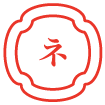Winter Collection | Product Launch
Kaikado Tea Caddy
Founded in 1875, Kaikado is the world’s oldest handmade tea caddy maker. Now in its sixth-generation of ownership, Kaikado’s heritage is rich in family history and tradition as its design and craft have remained unchanged to this day. Its double-walled design retains the flavour and quality of freshly picked tea leaves as well as coffee beans, herbs and spices. Each tea caddy is hand built to last generations of use and will develop a rich patina over time.
Instructions for Care:
Please do not wash the caddy. If you should get water on it, wipe it off and gently rub with a soft dry cloth to avoid moisture spots. It is important to lift the lid softly from the body in order to prevent any possibility of damage. When the joint line of the lid and body is adjusted, the lid slides down to prevent air from entering the caddy.
Black Ceramic Teapot
This black ceramic teapot with a side handle, also known as yokode kyusu (急須), is ideal for brewing loose leaf tea. The fine mesh inside the spout filters the tea leaves when pouring. This teapot is made in Tokoname, home to one of the six ancient kilns of Japan along with Seto, Bizen, Tamba, Shigara and Echizen and a city renowned for its Tokoname-yaki ceramicware since the 12th century.
The ample size of the round teapot is ideal for Sencha as it allows the leaves to expand and soften for a full-flavoured infusion.
Material: Black Clay
Place of Origin: Tokoname, Japan
Rush Woven Basket
Handwoven in Yuan-li, Taiwan with lin (藺) - wild rush grass, which is native to the region, each basket takes an entire day to be woven. Rush weaving cannot be replicated by machine and requires immense skill and patience. With over 300 years of history, it is one of Taiwan’s oldest and most traditional crafts.
Trivet / Paper Weights / Stationary Trays
The solid brass stationary are sand-casted by hand in one of the oldest brass foundries in Japan, founded in 1897 in the Toyama prefecture. The brassware is left in its original casted finish, giving it a raw and sanded texture. The piece will age beautifully as the colour of brass darkens and develops a rich patina over time due to oxidisation.
Oak Wooden Bowl
Made from natural oak and lacquer by craftsmen in the Yamanaka Kanazawa region for six generations, these hand-turned bowls embody a refined wood grain pattern. Kashokubiki, the Japanese technique of shaving wood, is a distinguishing feature of Yamanaka lacquerware which prevents slipping and allows for these bowls to be both delicate and durable.
Edo Kiriko Glass ( Kai Series / Bamboo Series )
Edo Kiriko is a Japanese cut glass tradition, which started in 1834 during the Edo period. Its distinctive appearance is created using clear colours and delicate patterns cut into glass. Glass cutters today preserve its traditional 200-year old glass designs as well as creating new pieces with a contemporary aesthetic.
The fine cuts in the glass catch and reflect light. A traditional Edo Kiriko pattern, the Kai series requires artisanal skills to achieve its intricate details.
The bamboo series is a contemporary design of Japanese cut glass. The subtle dents and stripes resembling bamboo shoots are hand cut onto the glass.









